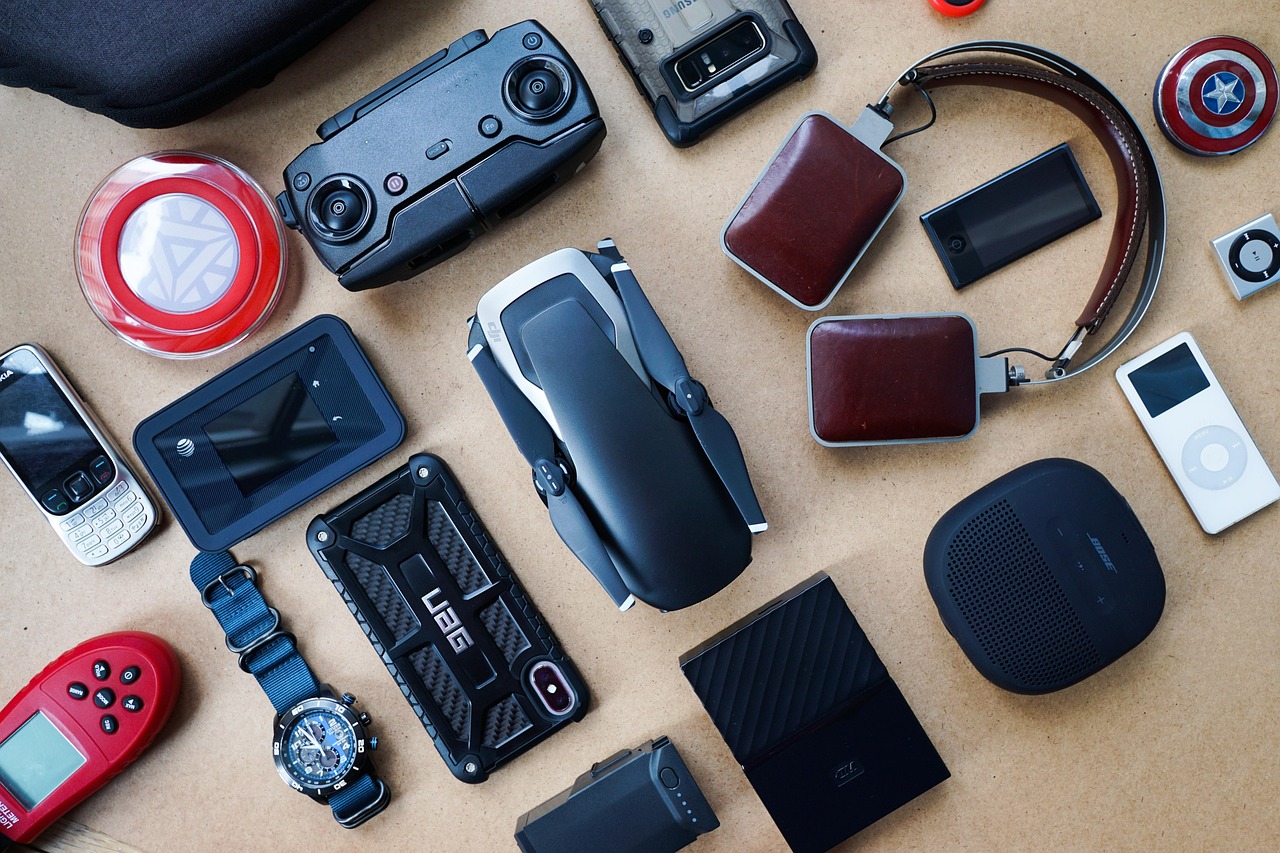Duration of Gadget Use and Severity of Dry Eye Syndrome based on the Ocular Surface Disease Index (OSDI) Questionnaire in Final-Year Students of the Faculty of Medicine, Universitas Airlangga

Downloads
Highlights:
Screen time is one of the risk factors for dry eye disease (DED). Therefore, students are at high risk for DED.
- The ocular surface disease index (OSDI) is one method used to assess dry eye disease based on subjective symptoms. However, the correlation between screen time and the incidence of dry eye and/or its severity based on OSDI produces varying results.
The majority of respondents had dry eyes based on OSDI. There was no correlation between screen time and dry eye incidence or severity based on OSDI parameters. Females had higher mean OSDI scores than males.
Abstract
Introduction: People’s screen time surged during and after the COVID-19 pandemic. Screen time was a risk factor for dry eye disease (DED). This study examined the correlation between screen time and DED severity based on an ocular surface disease index (OSDI) questionnaire in final-year undergraduate students of the Faculty of Medicine, Universitas Airlangga, Surabaya, Indonesia.
Methods: This was a cross-sectional study. Respondents were recruited via a total sampling method. One hundred eight students participated in this study. Independent variables were sex, average duration of device use per day, and degree of daily gadget usage time. Dependent variables were OSDI score, degree of dry eye based on OSDI score, and dry eye incidence. Chi-Square, Spearman, Kruskal-Wallis, and Mann-Whitney tests were used in data analysis.
Results: There was no significant relationship between daily gadget use duration and OSDI score (p=0.497; r=-0.066) and between the degree of daily gadget usage time and dry eye severity (p=0.609; r=0.050). Sex was unrelated to dry eye incidence (p=0.072) nor severity (p=0.125). There were no significant differences in daily gadget use duration between dry eye vs non-dry eye respondents (p=0.926) and across dry eye severity (p=0.934). There were no significant differences in OSDI scores between degrees of screen time (p=0.978). There was no significant correlation between the incidence of dry eye and the degree of daily gadget usage time (p=0.640). Female respondents had higher mean OSDI scores than males (p=0.009).
Conclusion: Screen time was not related to the incidence and severity of dry eye based on OSDI. However, many respondents had dry eyes based on OSDI.
Craig JP, Nichols KK, Akpek EK, Caffery B, Dua HS, Joo CK, et al. TFOS DEWS II Definition and Classification Report. Ocul Surf 2017; 15: 276–283. [PubMed]
Stapleton F, Alves M, Bunya VY Jalbert I, Lekhanont K, Malet F, et al. TFOS DEWS II Epidemiology Report. Ocul Surf 2017; 15: 334–365. [PubMed]
Mardiansyah HT, Irmawati M, Susanti D. Association between the Use of Touchscreen Device and Child Development. JUXTA J Ilm Mhs Kedokt Univ Airlangga 2021; 12: 45–47. [Journal]
Tuwu D. Kebijakan Pemerintah dalam Penanganan Pandemi COVID-19. J Publicuho 2020; 3: 267. [Journal]
Aguilar-Farias N, Toledo-Vargas M, Miranda-Marquez S, Cortinez-O'Ryan A, Cristi-Montero C, Rodriguez-Rodriguez F, et al. Sociodemographic Predictors of Changes in Physical Activity, Screen Time, and Sleep among Toddlers and Preschoolers in Chile during the COVID-19 Pandemic. Int J Environ Res Public Health; 18. December 2020. [PubMed]
Karaca S. Children are More Exposed to Electromagnetic Radiation in COVID-19 Lockdown: A Literature Review. Indones J Public Heal 2023; 18: 169–178. [Journal]
Bernadette K, Rasyid M. Screen Time and Dry Eye Disease During Distance Learning among the Class of 2019 Medical Students at a University in Jakarta, Indonesia. Folia Medica Indones 2023; 59: 8–13. [Journal]
Aggarwal S, Galor A. What’s New in Dry Eye Disease Diagnosis? Current Advances and Challenges. F1000Research; 7. 2018. [PubMed]
Hyon JY, Yang HK, Han SB. Dry Eye Symptoms May Have Association with Psychological Stress in Medical Students. Eye Contact Lens 2019; 45: 310–314. [PubMed]
Latupono S, Tualeka S, Taihuttu Y. Hubungan Penggunaan Media Elektronik Visual dengan Kejadian Sindroma Mata Kering di Fakultas Kedokteran Universitas Pattimura. Molucca Medica 2021; 22–35. [Journal]
Swasty S, Tursinawati Y. Kejadian Dry Eye pada Mahasiswa Fakultas Kedokteran Universitas Muhammadiyah Semarang Dipengaruhi oleh Paparan AC. Med J Kedokt dan Kesehat 2021; 11: 96–104. [Journal]
Yamanishi R, Uchino M, Uchino Y, Kawashima M, Dogru M, Yokoi N, et al. Changes in Distribution of Dry Eye Diagnostic Status among Visual Display Terminal Workers According to the Revised Criteria of the Asia Dry Eye Society. Cornea 2020; 39: 578–583. [PubMed]
Bron AJ, de Paiva CS, Chauhan SK, Bonini S, Gabison EE, Jain S, et al. TFOS DEWS II Pathophysiology Report. Ocul Surf 2017; 15: 438–510. [PubMed]
Luo Y, Yang W, Qi M, Wang Y, Li S, Wang M, et al. Annual Direct Economic Burden and Influencing Factors of Dry Eye Disease in Central China. Ophthalmic Epidemiol 2021; 1–8. [PubMed]
Chan C, Ziai S, Myageri V, Burns JG, Prokopich CL. Economic Burden and Loss of Quality of Life from Dry Eye Disease in Canada. BMJ Open Ophthalmol 2021; 6: e000709. [PubMed]
Yang W, Luo Y, Wu S, Niu X, Yan Y, Qiao C, et al. Estimated Annual Economic Burden of Dry Eye Disease Based on a Multi-Center Analysis in China: A Retrospective Study. Front Med 2021; 8: 771352. [PubMed]
Febrianti S, Bahri TS. Gejala Computer Vision Syndrome pada Mahasiswa Keperawatan. J Ilm Mhs Fak Keperawatan 2018; 3: 201-207. [Journal]
Irmayani I, Irawan B, Parinduri AI, Lubis AS. Hubungan Lama Penggunaan Komputer dengan Kejadian Computer Vision Syndrome pada Pegawai Kantor Di Rumah Sakit Grandmed Lubuk Pakam. J Kesmas dan Gizi 2020; 2: 114–118. [Journal]
Darmawan D, Wahyuningsih AS. Keluhan Subjektif Computer Vision Syndrome pada Pegawai Pengguna Komputer Dinas Komunikasi dan Informasi. Indones J Public Heal Nutr 2021; 172–183. [Journal]
Sekarrini L. The Impact of Smartphone Usage in Adolescents 15-24 Years Old in Jabodetabek Region. Indones J Public Heal 2020; 15: 103–111. [Journal]
Vizcaino M, Buman M, DesRoches CT, Wharton C. Reliability of a New Measure to Assess Modern Screen Time in Adults. BMC Public Health 2019; 19: 1386. [PubMed]
Nie NH, Bent DH, Hull CH. Statistical Package for the Social Sciences (SPSS) (2022). [Website]
Akib MN, Pirade SR, Syawal SR, Fauzan MM, Eka H, Seweng A. Association between Prolonged Use of Smartphone and the Incidence of Dry Eye among Junior High School Students. Clin Epidemiol Glob Heal 2021; 11: 100761. [ScienceDirect]
Loebis R, Subakti Zulkarnain B, Zahra N. Correlation between the Exposure Time to Mobile Devices and the Prevalence of Evaporative Dry Eyes as One of the Symptoms of Computer Vision Syndrome among Senior High School Students in East Java, Indonesia. J Basic Clin Physiol Pharmacol 2021; 32: 541–545. [PubMed]
Wolffsohn JS, Arita R, Chalmers R, Djalilian A, Dogru M, Dumbleton K, et al. TFOS DEWS II Diagnostic Methodology Report. Ocul Surf 2017; 15: 539–574. [PubMed]
Zhao M, Yu Y, Roy NS, et al. Sex-Related Differences and Hormonal Effects in the Dry Eye Assessment and Management (DREAM) Study. Br J Ophthalmol 2023; 108: 23–29.
Sullivan DA, Rocha EM, Aragona P, Clayton JA, Ding J, Golebiowski B, et al. TFOS DEWS II Sex, Gender, and Hormones Report. Ocul Surf 2017; 15: 284–333. [PubMed]
Li W, Lin MC. Sex Disparity in How Pain Sensitivity Influences Dry Eye Symptoms. Cornea 2019; 38: 1291–1298. [PubMed]
Almutairi R, Algezlan S, Bayamin R, Alrumaih S, Almutairi R, Alkahtani R, et al. The Association between Dry Eye and Sleep Quality among the Adult Population of Saudi Arabia. Cureus 2022; 14: e22736. [PubMed]
Krisnana I, Hariani V, Kurnia ID, Arief YS. The Use of Gadgets and Their Relationship to Poor Sleep Quality and Social Interaction on Mid-Adolescents: A Cross-Sectional Study. Int J Adolesc Med Health; 34. February 2020. [PubMed]
Lim EWL, Chee ML, Sabanayagam C, Majithia S, Tao Y, Wong TY, et al. Relationship between Sleep and Symptoms of Tear Dysfunction in Singapore Malays and Indians. Invest Ophthalmol Vis Sci 2019; 60: 1889–1897. [PubMed]
Abdalqader MA, Ariffin IA, Ghazi HF, AboBakr MF, Fadzil MA. Prevalence of Insomnia and Its Association with Social Media Usage among University Students in Selangor, Malaysia, 2018. Folia Medica Indones 2018; 54: 289–293. [Journal]
Arisyna A, Sustini F, Muhdi N. Anxiety Level and Risk Factors in Medical Students. JUXTA J Ilm Mhs Kedokt Univ Airlangga 2020; 11: 79–82. [Journal]
Alda RR, Utomo B, Hasan H. Correlation between Stress Level and Learning Motivation of Pre-Clinical Medical Student in Faculty of Medicine Universitas Airlangga. JUXTA J Ilm Mhs Kedokt Univ Airlangga 2020; 11: 18–22. [Journal]
Zulkarnain BS, Loebis R, Aryani T. Sodium Hyaluronate Eye Drops for College Students with Computer Vision Syndrome in Indonesia. Folia Medica Indones 2022; 58: 293–297. [Journal].
Copyright (c) 2025 Arya Agung Hari Subagiono, Evelyn Komaratih, Pirlina Umiastuti, Rozalina Loebis

This work is licensed under a Creative Commons Attribution-ShareAlike 4.0 International License.
1. The journal allows the author to hold the copyright of the article without restrictions.
2. The journal allows the author(s) to retain publishing rights without restrictions
3. The formal legal aspect of journal publication accessibility refers to Creative Commons Atribution-Share Alike 4.0 (CC BY-SA).




























